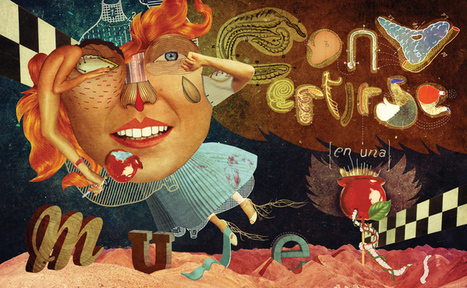Via Robin Good
Get Started for FREE
Sign up with Facebook Sign up with X
I don't have a Facebook or a X account
 Your new post is loading... Your new post is loading...
 Your new post is loading... Your new post is loading...
|
Sample Student's curator insight,
May 5, 2015 10:14 PM
We often ask our students to create annotated bibliographies, and this focuses on their capacity to evaluate and make decisions about the validity, reliability and relevance of sources they have found. using Scoop.it, we can ask them to do much the same thing, but they will publish their ideas for an audience, and will also be able to provide and use peer feedback to enhance and tighten up their thinking. This is relevant to any curriculum area. Of course it is dependent on schools being able to access any social media, but rather than thinking about what is impossible, perhaps we could start thinking about what is possible and lobbying for change.
Sample Student's curator insight,
May 5, 2015 10:18 PM
We often ask our students to create annotated bibliographies, and this focuses on their capacity to evaluate and make decisions about the validity, reliability and relevance of sources they have found. Using Scoop.it, we can ask them to do much the same thing. But they will publish their ideas for an audience, and will also be able to provide and use peer feedback to enhance and tighten up their thinking. This is relevant to any age, and any curriculum area. Of course it is dependent on schools being able to access social media. But rather than thinking about what is impossible, perhaps we should start thinking about what is possible, and lobbying for change. Could you use a Scoop.it collection as an assessment task? |












This looks fantastic!
Se ve genial la herramienta, la probaré y les cuento!
@JoannaPrieto
EdCanvas is a web service which allows you to search, find, clip and collect any kind of content, from text to video clips and to organize it into visual boards for educational and learning purposes.
Differently than Pinterest, EdCanvas is specifically targeted at the education world and at schools and teachers, and it makes possible not just to collect "images" from web pages, but to collect and organize whichever content elements you want, including full web pages.
EdCanvas boards also offer the ability to easily reposition each item in the collection according to your preferences and it provides a number of pre-set layout options for displaying content in your boards.
The strongest feature for EdCanvas is an integrated search engine, which allows you to search for images, websites, video clips across Google, YouTube and Flickr, and lets you grab and drop any relevant result into anyone of your collections. Furthermore Edcanvas can connect directly to your Dropbox or Google Drive giving you access to all of your personal library files.